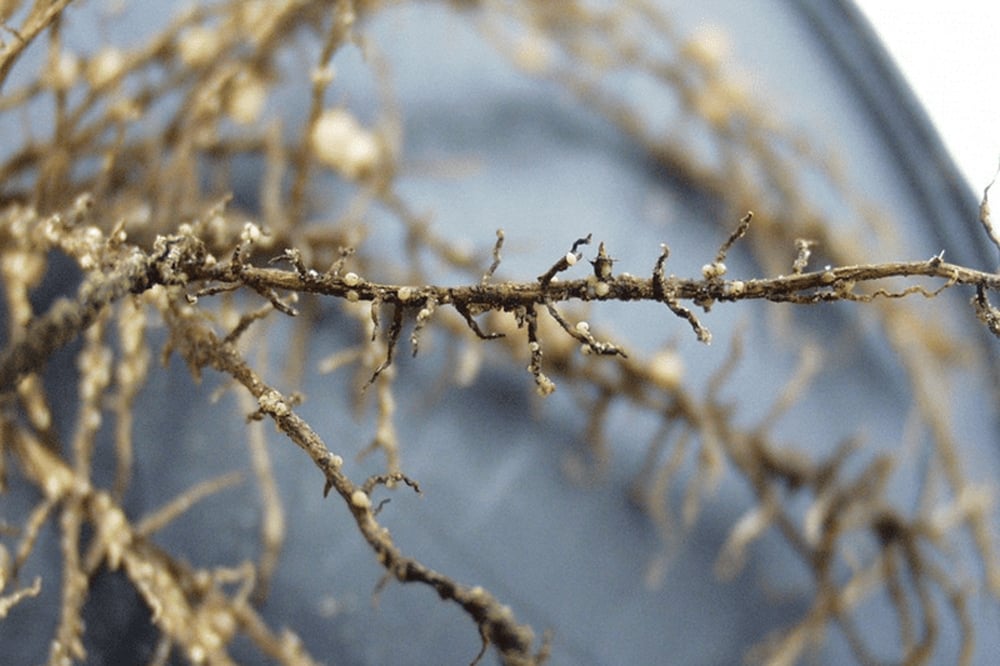It was the battle of the beans in Portage la Prairie last year, in the hope of shedding some light on best practices for soybeans.
Results from the 2017 Ultimate Soybean Challenge were presented at this year’s Ag Days in Brandon.
Three teams, with three very different management strategies, looked to outshine their competition at the AAFC Canada-Manitoba Crop Diversification Centre in that community.
For Team A, the goal was to follow the best management practices outlined by conventional wisdom. Team B wanted to save money on seed, but spend it elsewhere on “smaller-ticket items,” like fungicide and growth hormones.
Team C purposefully strayed from the beaten path. Led by AAFC’s Curtis Cavers and Manitoba Agriculture crop nutrition expert, John Heard, the third plot turned to, “novel or alternative practices,” the Ag Days audience were told.
So who was the winner?
Established best management practices won the year.
Led by Cassandra Tkachuk, production specialist with the Manitoba Pulse and Soybean Growers, and the University of Manitoba’s Kristin MacMillan, Team A finished with 47 bushels an acre. Lange’s “small-ticket” items landed him and his partner, fellow Manitoba Agriculture employee Terry Buss, in second with 35 bushels an acre, while Team C returned 24 bushels an acre.

Canopy cover was a big part of their success, Tkachuk told the audience.
Their team opted for 190,000 seeds per acre, up from the other teams at 150,000. The bigger boost, however, came from a slightly lower seeding depth, something that allowed their seeds to get better moisture in 2017’s dry conditions and explode to 86 per cent seed survival, compared to 40-41 per cent in the other groups.
In the end, Team A’s plot emerged with 163,000 plants per acre, while Team B and C lagged with 61,000 and 60,000 plants per acre, respectfully.
Those numbers are a departure from last year’s challenge, which Lange says returned 110,000 plants per acre under a similar lower seeding rate.
Stand key
Read Also

Powdery scab a puzzling potato problem
Soil-borne potato disease powdery scab thrives in cool, moist conditions and is hard for crop researchers to study, but there are things Manitoba farmers can do to keep it out of fields.
Lange pointed to research out of North Dakota, which suggests anything below 80,000 plants an acre will suffer yield loss, regardless of row spacing.
“At the end of the day, if you don’t get your seeding rate right, nothing else you do during the growing season is really going to make up for it,” he said. “Even though our seeding rate was right, we didn’t get the stand that we wanted, so anything we did during the growing season didn’t increase our yield, but still maintained our yield.”
Team A’s canopy translated to less weed concern. Soybeans are poor competitors with weeds, Tkachuk told the audience, and the faster the canopy closes, the better.
That played out in the field. Team A’s tighter canopy translated to $8.98 spent per acre (two glyphosate passes) on herbicide, one pass less than Team B’s $13.47 per acre. Team C was forced to take a more dramatic hit, spending $43.92 an acre on Treflan and Basagran, plus fuel for two mechanical weed control passes that other teams avoided.
“Team A and B had great weed control, but Team C, the weed control just wasn’t there and that’s what took that extra yield off,” Tkachuk said.
Unlike the competition, Tkachuck’s team chose a double inoculant, despite the additional cost. Her team spent $7.74 an acre on inoculant, compared to $3.60-$3.65 for other teams.
“We made that decision because of the field history, assuming that soybean production had not taken place on that field previously,” she said.
Manitoba Pulse and Soybean Growers recommends at least two well-nodulated soybean crops, at least one in the last four years, and no flood or drought before dropping to single inoculation.
Team A did have more nodules, although all three met the five to 10 nodules per plant laid out by the commodity group.
Differences
There was significant variability in the plots, something Tkachuk tags as a take-home message from the experiment.
“Do more counts,” she advised. “Don’t just pull out one plant and say, ‘Oh, this isn’t good,’ or ‘Oh, this is great.’ You need to really get a clear picture across the field.”
Team A saved money by opting out of seed treatment, while Team C took on $5.64 an acre of cost and Team B placed its bets on additional seed treatment with $12.50 an acre, along with $5.64 an acre for fungicide and $5 an acre for growth hormone.
Standings didn’t change when it came to profitability.
Team A’s best management practices gave it a $437.86-per-acre return over input and fuel costs compared to $300.96 for Team B and $187 an acre for Team C.
Tkachuk took those results to mean that extra seed in the ground is well worth the money and soil depth gives a much-needed edge during a dry season.
Both Tkachuk and Lange say they would like to run the challenge again in a different year (and a different moisture situation). At the same time, Tkachuk pointed out that the challenge was more demo exercise than rigorous research.
This was the second time Manitoba has attempted the challenge, but the first teams have seen it through. Last year, teams could compare on initial plant stands, but plots were hailed out before harvest.




















